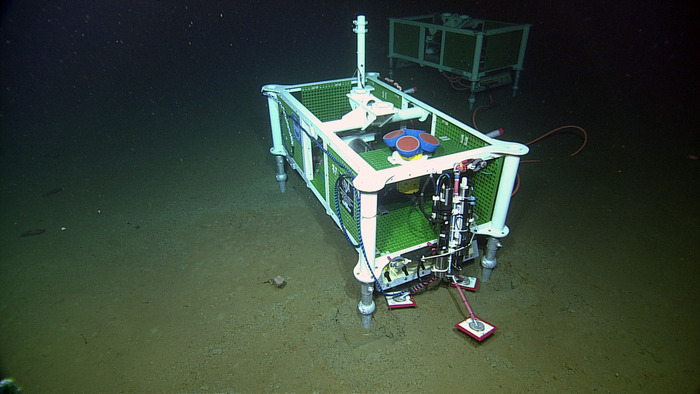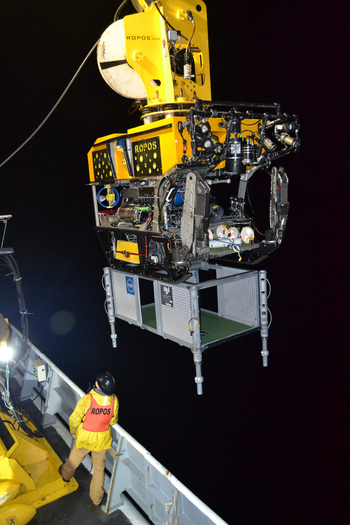Eighteen Secondary Nodes, also called junction boxes were installed and connected to the Primary Infrastructure during the VISIONS'14 expedition. They serve as electrical and communications outlets to 33 kilometers of extension cables and ~140 instruments that operate at depths of nearly 9000 feet beneath the ocean's surface and in some of the most extreme environments on Earth - hydrothermal vents.
The 'J-Boxes' come in three "flavors" - Medium Power and Low Power Junction Boxes, and Low Voltage Nodes and they are configured specific to the instruments and infrastructure (e.g. mooorings) that will be attached to them by extension cables. They host up to 8 instrument ports and each J-Box has 375 volts and 1 Gb/s transmission capabilities. The nodes and junction boxes were designed and built at the University of Washington Applied Physics Lab.
A Low Power Junction Box comprises the inside of Benthic Experiment Platforms (BEP) at the Oregon Endurance Offshore (600 m) and Shelf (80 m) sites.




